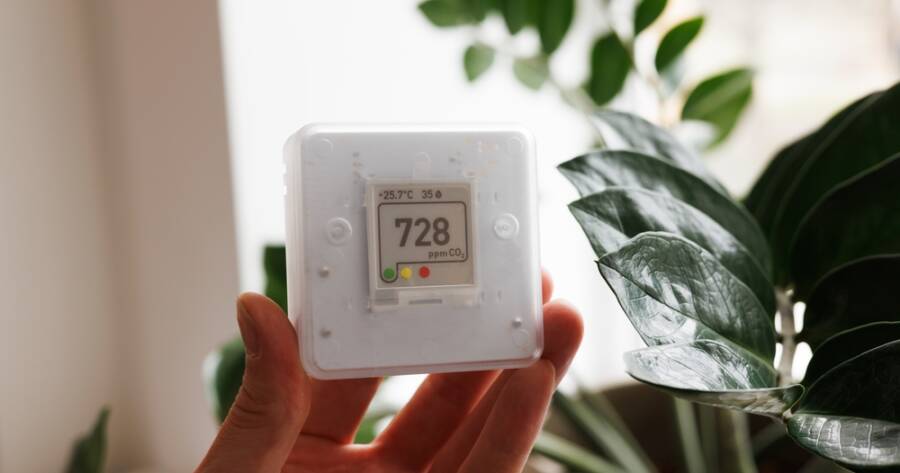Air pollution is often considered an outdoor issue, but the truth is, indoor air quality can have just as much—if not more—impact on our health. Since people in the United States spend most of their time indoors, understanding and improving the air we breathe at home and work is essential. Air quality monitors give you a clear picture of what’s happening in your environment, helping you make small changes that can lead to big improvements in health and comfort.
Understanding What Air Quality Monitors Measure
Air quality monitors are designed to detect and report various elements in the air that may impact health. These typically include particulate matter (like PM2.5), volatile organic compounds (VOCs), carbon dioxide (CO₂), carbon monoxide (CO), humidity, and temperature. Some advanced monitors even detect formaldehyde, nitrogen dioxide, and radon.
Each of these elements plays a role in how we feel. For instance, high levels of CO₂ can lead to fatigue and poor focus, while elevated VOCs—often released by cleaning products, paints, or furniture—can irritate the lungs and eyes. A good monitor helps you see patterns over time and sends alerts when levels go outside the recommended range.
Why Indoor Air Quality Affects Your Health
Poor indoor air can contribute to several short- and long-term health problems. In the short term, symptoms might include headaches, sore throat, watery eyes, dizziness, or allergies. Over time, consistent exposure to harmful air can increase the risk of asthma, heart disease, and other chronic conditions.
Humidity is also a key factor in air quality. Too much humidity can encourage mold growth and dust mites, while too little can dry out the skin, throat, and nasal passages. Air quality monitors help you strike a balance by alerting you when humidity levels shift too far in either direction.
Children, older adults, and people with respiratory illnesses are especially sensitive to indoor air pollutants. Using a monitor helps you respond quickly to changes and make informed decisions—like when to open windows, run an air purifier, or reduce use of chemical-based products.
Popular Air Quality Monitors That Make a Difference
A few consumer-friendly air quality monitors have gained attention for being reliable and easy to use. For example, Airthings offers portable monitors that detect radon, CO₂, and VOCs while providing real-time updates via a mobile app. This brand is especially useful for households concerned about radon exposure, which can be more common in certain regions of the U.S.
Awair is another popular option. Its devices track five key factors: temperature, humidity, CO₂, chemicals, and fine dust. The app translates this data into a wellness score and gives personalized recommendations for improvements, like using a dehumidifier or moving furniture to improve airflow.
For those who want the broadest overview, uHoo offers a high-end monitor that tracks nine different indoor air factors. The companion app provides color-coded indicators and suggestions on how to correct air imbalances, making it easier for users to act on the information provided.
While some of these systems integrate with smart home platforms like Google Home or Alexa, they also work well on their own, giving you flexibility depending on your comfort with smart technology.
Making Changes Based on What You Learn
An air quality monitor is most useful when it leads to action. If your device shows high levels of VOCs, you might choose to switch to natural cleaning products or open windows after painting. If CO₂ levels spike while working from home, taking short outdoor breaks or using an air exchanger can help restore balance.
Small changes like running a HEPA filter, using a fan to improve air circulation, or sealing gaps around windows and doors can all make a noticeable difference. Monitors also help you track the impact of these changes over time, giving you confidence that your efforts are working.
Some monitors provide historical data graphs, letting you spot trends such as poor nighttime air in bedrooms or increased pollutants during specific chores like cooking. This awareness empowers you to adjust habits, layouts, or devices to support healthier living every day.
A Breath of Fresh Insight
Improving indoor air quality isn’t just about comfort—it’s a key part of protecting your long-term health. With the right air quality monitor, you can gain real-time insight into your environment and make simple, smart changes that reduce exposure to harmful particles and gases.
Whether you’re trying to sleep better, reduce allergy symptoms, or protect vulnerable family members, a monitor is a small investment with lasting impact. In today’s world, clean air at home is no longer a luxury—it’s a necessity you can take control of.

